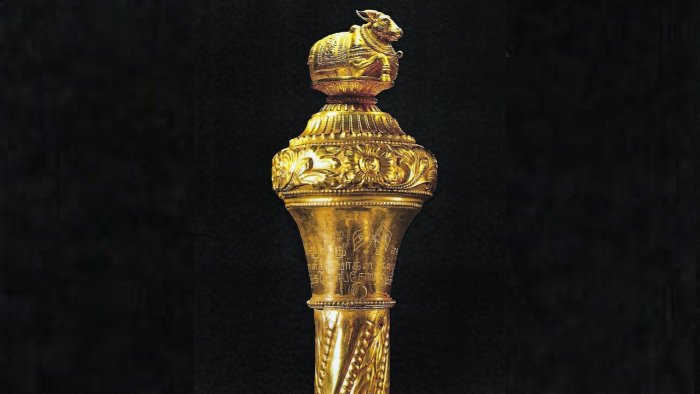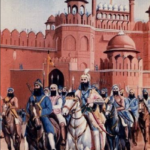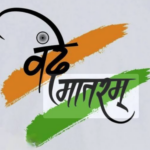As a major cultural symbol of India’s independence, a historic sceptre, ‘Sengol’, which marked the transfer of power from the Britishers in 1947, will be placed in the new Parliament building. ‘Sengol’ is a symbol of historic legacy, which was used by former Prime Minister on August 14, 1947, when the transfer of power took place from the British.
The History of Sengol in Independent India
‘Sengol’ was chosen as the symbol of the transfer of power after intensive research.
“When the time for transfer of power came, Lord Mountbatten who was the Viceroy asked former PM Nehru about what should be the symbol of transfer of power to the country as per the Indian traditions. Nehru discussed the issue with freedom fighter and avid historic scholar C Rajagopalachari. He (Rajagopalachari) after doing an intensive historic research said that as per the Indian traditions, ‘Sengol’ has been marked as the symbol of historic transfer”.
“Based on this, Nehru accepted the Sengol from Adheenam, who were specially brought from Tamil Nadu. Thus, the power was transferred to the Indian hands. It is a realisation that the power came back to the Indians in a traditional method. Nehru accepted the ‘Sengol’ in the presence Dr Rajendra Prasad and many others. Nehru’s aim was emotional unity and academic integration. The event was widely reported in media and even in foreign countries.”
According to historical accounts, C Rajagopalachari had approached the Dharmic Mutt in the Tanjore district of Tamil Nadu – the Thiruvavaduthurai Adheenam. The leader of the Adheenam immediately commissioned the preparation of the ‘Sengol’.
At the time of the power transfer on August 14, 1947, three people were specially flown in from Tamil Nadu on August 14, 1947 – the Deputy high priest of the Adheenam, the Nadaswaram player Rajarathinam Pillai and the Oduvar (singer) – carrying the Sengol.
The priests conducted the proceedings. They gave the Sengol to Lord Mountbatten and took it back. The Sengol was purified with holy water. It was then taken in procession to Pandit Jawaharlal Nehru’s house, where it was handed over to him. A special song was rendered, as specified by the high priest.
Present Government (Modi govt) considers that keeping the Sengol in a museum is inappropriate, and nothing can be more appropriate place for the spectre then the parliament building.
The Chola Tradition
The word Sengol is derived from the Tamil word ‘Semmai’, meaning ‘Righteousness’. It is an Indic civilizational practice from the Chola kingdom, which was among the leading kingdoms in the Indian sub-continent for centuries.
The Chola dynasty was renowned for its extraordinary contributions to architecture, arts, and the patronage of literature and culture. The Sengol emerged as an iconic symbol of the Chola reign, symbolizing the power, legitimacy, and sovereignty of the Chola kings.
In contemporary times, the Sengol continues to be highly esteemed and holds deep cultural importance. It is venerated as a symbol of heritage and tradition, serving as an integral part of various cultural events, festivals, and significant ceremonies. The presence of the Sengol serves to honor and pay tribute to the rich history and legacy of Tamil culture.
The use of the Chola Dynasty Spectre during the transfer of power was widely reported by world media, and Time magazine had published several photographs. But the spectre vanished from public view after August 1947, and people forgot about it. 31 years later in 1978, Chandrashekarendra Saraswati told his disciple Dr. BR Subramaniam about the sceptre, who wrote about it in books.
As per the historic tradition, at the time of enthronement, the traditional guru of the preceptor of the King would hand over the ceremonial Sceptre to the new ruler.
Sengol – The significance of Tamil Nadu’s ‘Historic Sceptre’

Leave a comment




